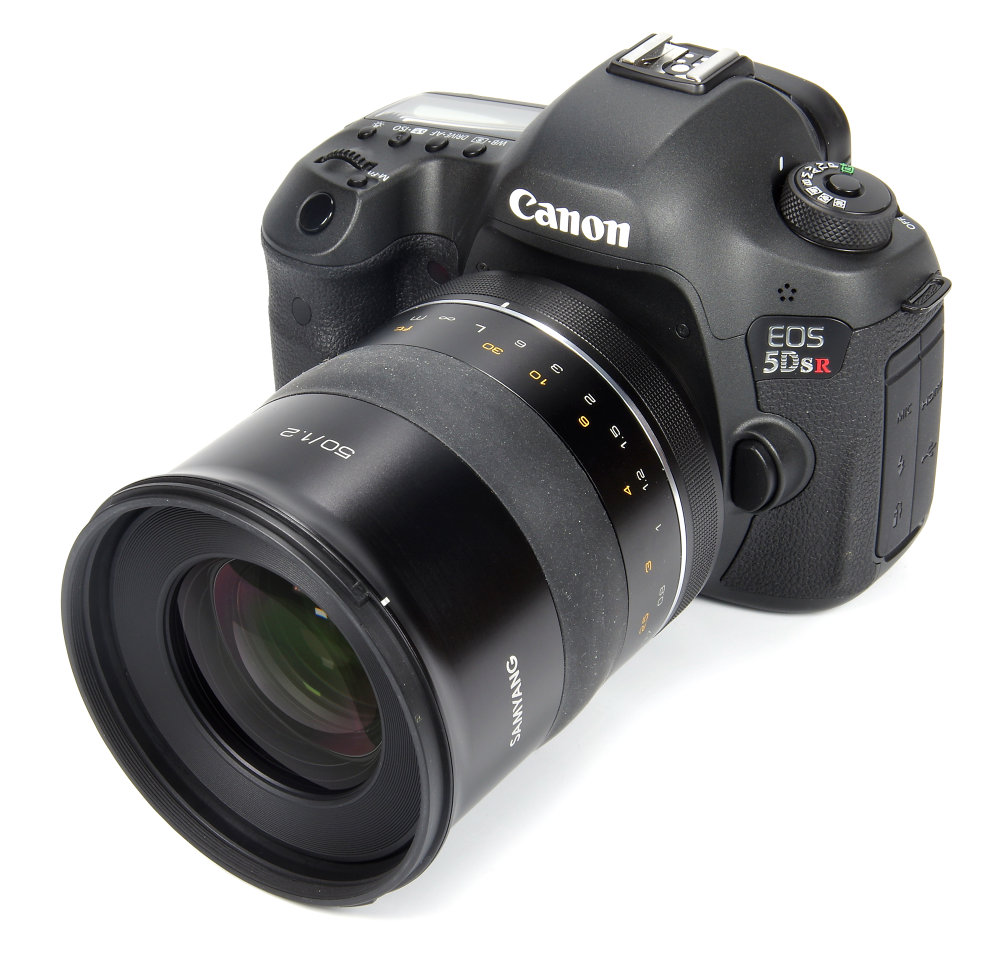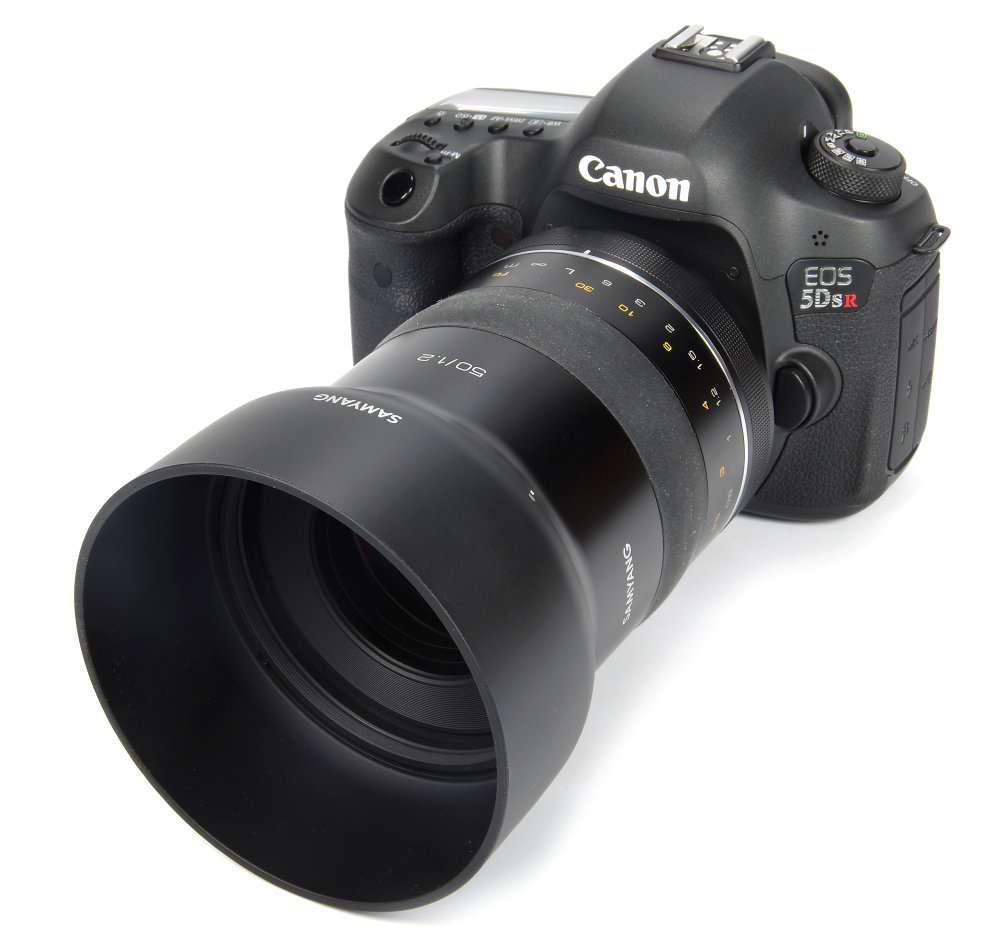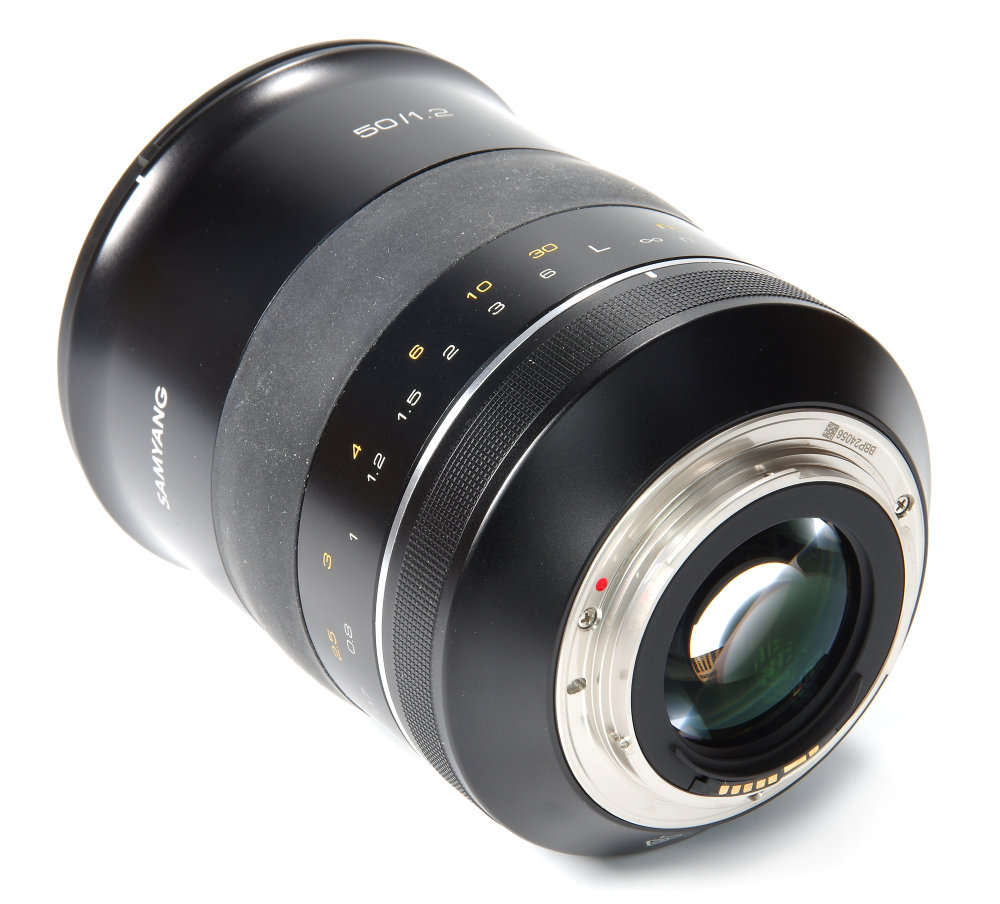Samyang XP 50mm f/1.2 Review
Samyang XP 50mm f/1.2 Handling and Features
This is a massive lens, weighing in at a very substantial 1200g. There is no doubt that this is a very hefty option for a manual focus 50mm lens. Nonetheless, it looks good and balances well of the Canon EOS 5DS R used for this review. This 50MP camera body is a good match for the lens, which has been designed with such a pixel count in mind, as well as the demands of 8K video. The appearance does seem to be Zeiss inspired, with its smooth contours and minimalistic approach. Unfortunately, the design of the rubberised focusing rings also emulates the rather dust prone nature of the Zeiss lenses.
Starting our tour of the lens at the front, a large round lens hood bayonets firmly into position. Within this is a traditional 86mm filter thread. The click stop on the hood is very tight, but no doubt this will become easier with the passage of time.
The only other adornment is the aforementioned rubber focusing ring. Prone to dust maybe but in terms of function it is utterly smooth. The focusing ring moves the inner barrel of the lens outwards, but the outer barrel remains the same length. The front element does not rotate, so the use of polarising and graduated filters is made much easier. The distance scale, marked in feet and metres, is very clear, but it does highlight the absence of a depth of field scale. There is plenty of room on the barrel for such a scale, and it is a pity it has not been included.
Focusing is down to a conventional 1.48 feet or 0.45m. This gives a maximum magnification of 0.17x. The optical construction is 11 elements in 8 groups, with one aspherical and one HR (High Refractive Index) in the formulation. The lens uses UMC Ultra Multicoating and the diaphragm comprises 9 rounded blades.
A 50mm lens is a very versatile tool, being able to be used on almost any subject and also capable of good performance even when optically abused with, for example, filters and close up devices.
The f/1.2 aperture may well have advantages in low light, but it does make manual focusing quite tricky in that there is so little depth of field and the slightest turn of the focusing ring can alter the point of focus. Of course, stopped down any slight errors may well be covered by depth of field as with any other lens. However, using a tripod and any focusing aids on the camera does pay dividends as we pursue the crispest images.
Add your message
Please login here or if you've not registered, you can register here. Registering is safe, quick and free.
photodo Stats
428 MTF tests
74 in-depth photodo reviews
100+ users join each day
Help the lens community by reviewing or rating a lens today via our lens search
Latest Lens Reviews
- Chinon 28mm f/2.8 Vintage Lens Review
- Canon EF 70-200mm f/4L IS II USM Lens Review
- Samyang AF 85mm f/1.4 EF Review
- Sigma 70mm f/2.8 DG Macro Art Review
- Samyang AF 24mm f/2.8 FE Review
- Meike 50mm f/1.7 Review
- Tamron 70-210mm f/4 Di VC USD Review
- Lensbaby Burnside 35mm f/2.8 Review
- Asahi Super Takumar 50mm f/1.4 Review
- Asahi Super-Multi-Coated Takumar 135mm f/3.5 Review



